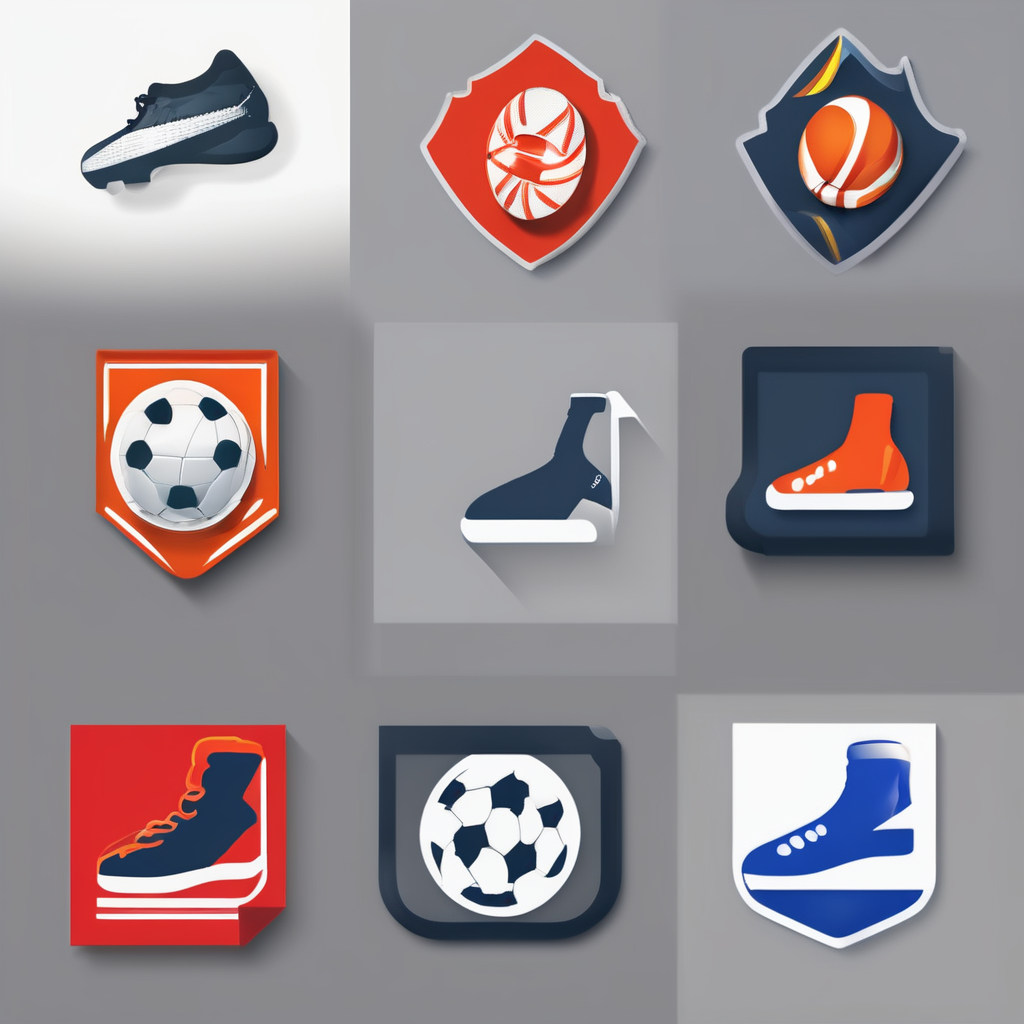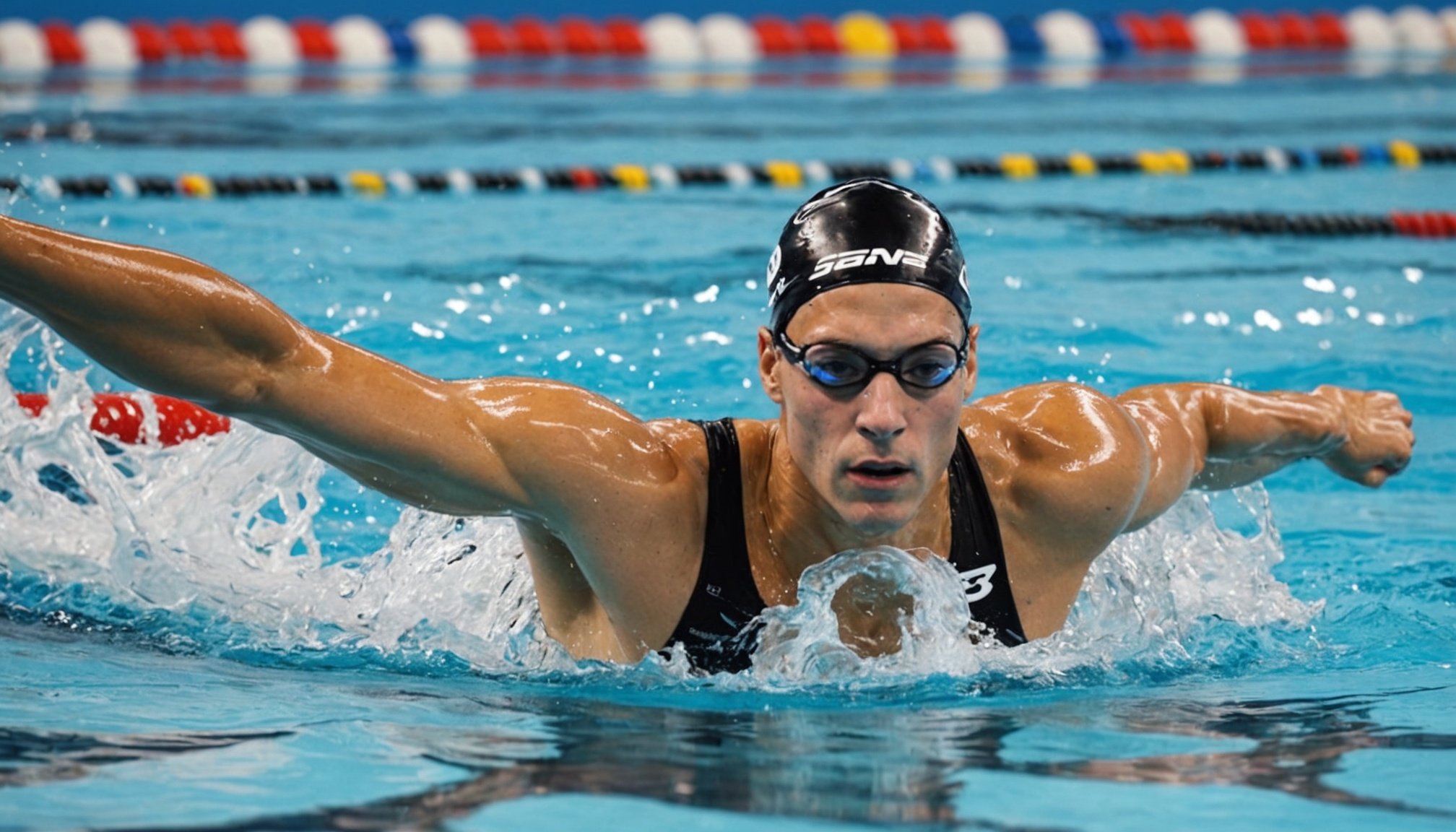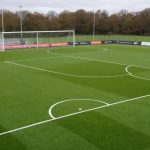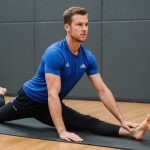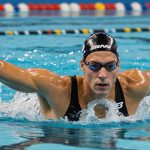Understanding Stroke Efficiency
Stroke efficiency in swimming refers to how effectively a swimmer uses their energy to propel themselves through the water. By improving stroke efficiency, swimmers can attain better performance enhancement while using less energy, reducing fatigue, and swimming faster.
The importance of maximizing efficiency becomes particularly evident for competitive swimmers. In races, where every second counts, having a more efficient stroke can make the difference between winning and losing. Higher stroke efficiency directly correlates with improved swimming technique, allowing athletes to swim larger distances with the same or reduced effort compared to less efficient techniques.
In the same genre : Maximizing gymnastics potential: how proprioceptive training enhances athletic excellence
Incorporating performance enhancement practices to boost stroke efficiency is a strategic move. With improved efficiency, swimmers can maintain speed even as they tire, manage energy reserves better, and recover more quickly, all while minimizing drag and optimizing stroke mechanics. Swimmers committed to refining their technique benefit not just physically but also strategically, as they gain insights into the mechanics of their strokes and identify areas needing improvement.
In essence, focusing on stroke efficiency is crucial for anyone serious about swimming, offering both immediate gains in speed and long-term benefits in endurance and performance. Ensuring your swimming style is both effective and efficient can be transformational.
This might interest you : Maximizing athletic potential: exploring how wearable tech revolutionizes training and progress monitoring
Key Technical Drills for Stroke Efficiency
Technical drills are a vital part of improving stroke efficiency in swimming. They guide swimmers in refining their swimming technique and achieving performance enhancement. Let’s explore some drills that can greatly improve your efficiency in the water.
Single Arm Drill
The Single Arm Drill focuses on perfecting each arm’s movement individually, important for developing a balanced and efficient stroke. By isolating one arm at a time, swimmers gain heightened awareness of arm positioning, build muscle memory, and work on stroke coordination. This drill can be done with or without a kickboard, and it’s crucial to maintain a streamlined body position while it is being performed.
Catch-Up Drill
In the Catch-Up Drill, both arms work in a synchronized fashion, touching or connecting briefly as they complete each stroke cycle. This helps in improving stroke coordination and builds more balanced timing between arms. It instills rhythmic movement across the water, essential for reducing drag and promoting an effective swim pace.
Finger Tip Drag Drill
The Finger Tip Drag Drill is popular for enhancing body position and arm recovery. While dragging fingertips across the water’s surface during the recovery phase, swimmers focus on keeping their elbows high. This builds suppleness in the shoulders and improves balance, crucial for enhancing overall stroke efficiency.
Integrating Drills into Your Training Routine
Integrating drills into your training routine is crucial to enhance your swimming technique. It is recommended to participate in these efficiency drills 2-3 times per week during swim practice. Each drill session should ideally be kept to 20-30 minutes to allow for focused improvement without excessive fatigue.
Balancing drill work with endurance training requires strategic planning. It is important to intersperse drills with longer swims. This ensures that you can apply newly refined techniques to your regular swim practice. A well-balanced training routine focuses on both skill refinement and stamina.
Tracking progress is essential in optimizing your stroke efficiency. Keeping a log of daily swim workouts, noting which technical drills were incorporated, and the resulting improvements in speed or form encourages reflection and informed adjustments. Make sure to note any challenges encountered during practice.
For sustainable improvement, it’s useful to reevaluate your approach regularly. This involves adjusting the type, frequency, or intensity of drills based on your progress. Such flexibility ensures that the benefits of performance enhancement extend beyond isolated improvements and contribute to holistic development.
Common Mistakes and How to Avoid Them
Improving your swimming technique involves being aware of common swimming mistakes and understanding how to correct them. This section addresses frequent technical errors and offers correction tips.
Poor Body Position
Body position is critical for optimal hydrodynamics. A common error is swimming with a dropped lower body, which increases drag. To correct this, engage your core and encourage better buoyancy by ensuring a neutral head position—neither looking too far ahead nor down.
Inefficient Breathing
Proper breathing technique is essential for stroke efficiency. Many swimmers lift their heads excessively when gasping for air, interrupting streamline. Instead, practice side breathing with minimal head lift, aligning your mouth just above the water surface to maintain rhythm and prevent performance enhancement loss.
Lack of Rotation
Effective body rotation is a cornerstone for a powerful stroke. Swimmers often keep their bodies too flat, limiting reach and propulsion. Focus on rotating your hips and shoulders in unison, which will not only enhance stroke length but also improve energy transfer from each stroke. Practice incorporating these correction tips to refine your form and ensure each swim session translates to measurable progress.
Visual Aids and Resources
Utilizing visual aids can significantly improve understanding and execution of swimming drills. Instructional videos are invaluable tools that visually demonstrate the steps and give clear guidance on drill techniques. Watching demonstrations allows swimmers to observe the nuances of technical drills, such as hand placement, body position, and smooth execution.
Mobile apps and tools offer advanced features for swim analysis, providing feedback on stroke efficiency and helping identify areas needing improvement. These tech aids can track progress, suggest adjustments, and even offer personalized drills to enhance swimming technique. By embracing technology, swimmers can make informed decisions about their training routines.
For those who prefer traditional learning methods, several instructional books and online courses are available. These resources often delve deeper into the mechanics of performance enhancement and provide structured approaches to integrate improvements. Books offer detailed explanations and can be excellent companions during training. Online courses bring the added benefit of interactive learning, with the ability to ask questions and engage with the content creators or other swimmers.
In essence, a variety of resources exist to support your swimming journey, each offering unique insights and methods to refine your technique and grow.
Benefits of Mastering Stroke Efficiency
Mastering stroke efficiency in swimming offers a range of performance benefits that transform both training and competition experiences. When swimmers refine their swimming technique, they often notice perceptible swimming advantages almost immediately. Enhanced stroke efficiency can often lead directly to faster swim times, as every stroke becomes more effective at propelling the body forward through water with reduced energy expenditure.
An optimized technique allows swimmers to sustain their energy reserves longer, resulting in enhanced endurance. As swimmers become less fatigued during their training or competitions, they can maintain a strong pace and finish races with power. With stroke adjustments leading to minimal water resistance and ideal energy conservation, swimmers can see significant gains in efficiency results over time.
Beyond the physical advantages, there are also psychological performance benefits. Swimmers can approach races with heightened confidence, knowing their refined swimming technique offers them a competitive edge. The mental assurance garnered from mastering stroke efficiency can help swimmers focus more on strategy rather than worrying about their form, ultimately leading to a more relaxed and focused mindset on race day.
